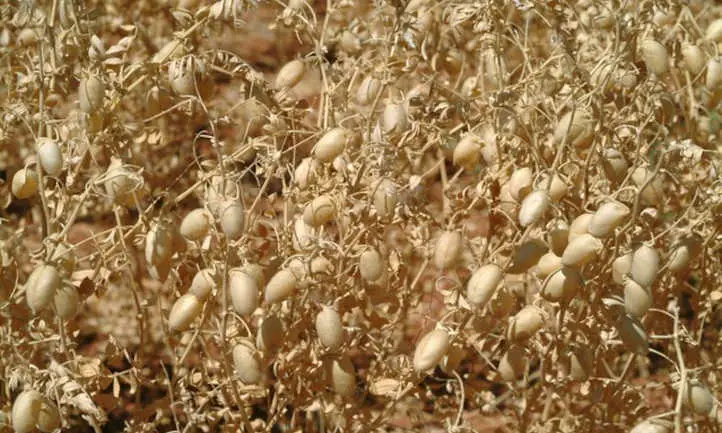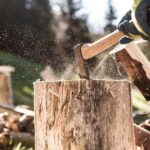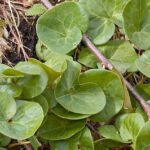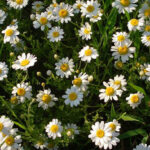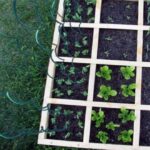There’s one thing that’s true about making hummus from scratch. You have to know how to grow chickpeas. There’s nothing like fresh chickpeas to liven up your kitchen and affix nitrogen into your garden soil. And growing chickpeas is worthwhile because it’s so rewarding.
You have a lot of varieties to choose from when it comes to planting chickpeas too. Sow seeds, add a little aged compost and you’re off! This legume has been around for a long time, and there’s a reason for that. Today, it’s a staple all over the world.
Chickpeas originated in the Middle East and made their way to Europe and India via trade routes and military movement. It’s no surprise that they spread as chickpeas are highly nutritious and almost medicinal in their properties. So, before you select chickpea seeds, let’s discuss ways to care for chickpea plants.
Quick Care Guide
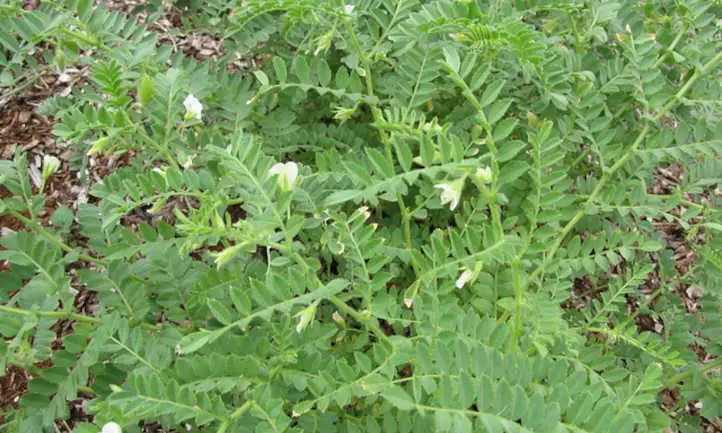
| Common Name(s) | Garbanzo beans, chickpeas, chana |
| Scientific Name | Cicer arietinum |
| Days to Harvest | 100 days from transplant |
| Light | Full sun |
| Water | 1 inch per week |
| Soil | Rich, well-draining |
| Fertilizer | High phosphorus and potassium powder upon planting |
| Pests | Beet armyworm, chickpea leafminer, bean beetles, cutworms, pod borers |
| Diseases | Blight, fusarium wilt, bean mosaic virus |
All About Chickpeas

Chickpeas (Cicer arietinum) are commonly known as garbanzo beans or chana. The first record of domesticated garbanzo bean plants dates to the pre-pottery neolithic era in Turkey. These garbanzo bean seeds made their way to the Mediterranean around 6000 BCE. Subsequently, they were first used in India in 3000 BC.
The chickpea plant is an herbaceous annual legume that vines to maturity in about 100 days from the transplant of chickpea seedlings. It reaches 8 to 20 inches tall atop a shallow root. It’s a bushy plant with spreading branches covered with soft glandular hairs. Each branch holds 3 to 8 pairs of alternately arranged hairy leaflets. As the plant matures, white flowers with blue, purple, or pink veins bloom either singly or in pairs at the tip of each branch. Blooms of a garbanzo bean plant are self-pollinating and can volunteer if the seed isn’t collected and harvested. The flowers die away and flat green pods form. Each pod contains 1 to 2 seeds. Before harvest, the plant can dry to a point where 90% of the pods turn brown. Or raw chickpeas can be extracted a few weeks before drying.
The pea-like seeds are the principal reason to grow garbanzo beans. They’re used raw, dried, ground, or popped. Many people enjoy garbanzo beans in hummus, where they’re combined with tahini, olive oil, fresh herbs, and garlic to make a lovely chickpea paste used as a dip, spread, or side dish. The leaves of the plant are also a popular accompaniment in Indian dishes.
Garbanzo beans are full of nutrition, and not just for humans. People plant chickpeas en masse to break disease cycles brought about by crops of wheat or barley. They are considered to be one of the many green manures growers plant in advance of other crops to enrich the soil. They were used as a coffee substitute in the 18th century and were again grown for this purpose in Germany during World War I. Almost every culture in the world has some use for garbanzo beans.
Planting Garbanzo Beans
Plant chickpea seeds early, at least two to three weeks before the last spring frost. Avoid planting chickpeas in starter pots as they are highly prone to transplant shock. Instead, sow chickpeas directly in the plant bed. If you must start them indoors, use biodegradable pots that allow you to plant the entire seedling pot in the garden later.
Give them a well-draining area rich with organic material. Full sun is a must. If the ground or climate is not suited to growing chickpeas, try plastic or ceramic containers that drain well and are at least 8 inches deep. Multiple containers give a good yield, while one is not enough. When you sow chickpeas, plant them 1.5 to 2 inches deep and space them 3 to 6 inches apart in rows 18 to 24 inches apart. Thin the strongest plants within rows to 6 inches. After they’re established, provide a thin layer of mulch to retain moisture.
Care
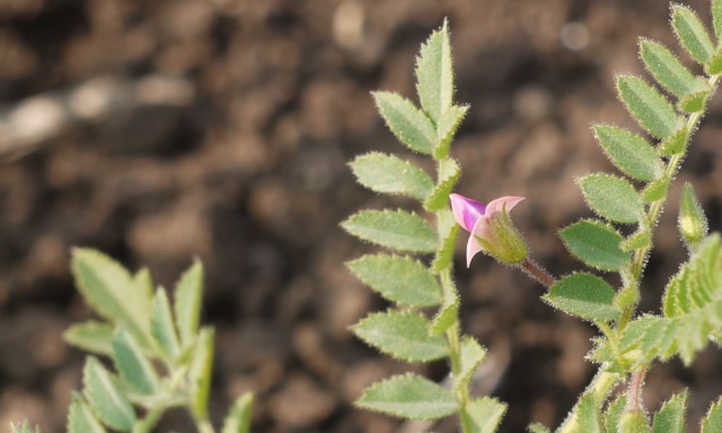
Once your chickpea seedlings sprout, you’re well on your way to a chickpea harvest. Let’s talk about the bare necessities of garbanzo bean care.
Sun and Temperature
Garbanzo beans need full sun with at least 6 to 8 hours of direct light per day. USDA zones 2 through 10b are great for growing chickpeas in spring. A fall planting is possible in zones 10b through 11, though at this time pestilence is more of an issue. In the chickpea plant’s native habitat daytime temperatures range from 70 to 80 degrees Fahrenheit. Nighttime temperatures can dip to 64 with no disadvantage to the plant.
Garbanzo beans need at least 90 days of cool weather to produce. They are slightly frost-tolerant as well. Too much cold during the flowering phase of chickpea growth can cause blossom drop. In the vegetative stage, cold reduces the ability of garbanzo beans to uptake water and nutrients, and growth may be stunted. Excessive heat above 85 degrees does the same. Water more in hot seasons, and use a shade cloth to shield your plant in a heatwave. In a snap freeze, a frost cloth might help. Bring your plant indoors if it already lives in a container.
Water and Humidity
Water regularly in the morning to keep the soil evenly moist. Chickpea plants enjoy at least 1 inch of water per week. Use drip irrigation or soaker hoses to water the plants at the base to directly feed water to the plant’s root system. Avoid overhead watering. When the plant is in the seed production phase, give it a little more water than usual. This ensures a good yield. If it rains a great deal in cool seasons while you’re growing chickpeas, refrain from overwatering. Instead, allow some drying in the soil before the next irrigation period. Chickpea plants are not drought tolerant and have lowered yields when there isn’t adequate soil moisture.
Soil
The planting bed or container should be full of rich soil. Because of this, make sure it is also well-drained soil. The soil structure can accommodate drainage needs if you don’t have agricultural sand or some other amendment to assist. Slope your gardening area to promote proper absorption of nutrients in the shallow root systems of your chickpea plants. It’s possible to produce chickpeas in poor soil, but a thin layer of aged compost helps a lot. The ideal pH range for growing chickpeas is 4 to 6.
Fertilizing
Avoid planting chickpeas with nitrogen-rich fertilizers. These plants already distribute nitrogen into the soil, and too much added nitrogen will divert the plant’s attention to leaf production, rather than healthy, green chickpeas. This is also why you shouldn’t grow this plant with other legumes. Provide a powder fertilizer of 5-10-10 NPK upon planting. 1 cup per 50 feet of row will give you an excellent yield.
Pruning/Training
Like snap beans, your plant might enjoy a bit of training on a trellis to support the dried beans that hang on the plant in the reproductive stage. As the plant grows, either stake, trellis, or cage it, as you gently move the plant onto your preferred support. If you’d like, at maturity (before flowering) prune the tips of the plant to produce more dry chickpeas.
Propagation
Chickpeas propagate best by seed. Use the planting section above to guide you. Remember that if you start your plants indoors, you’ll need biodegradable seedling pots, as these plants have a very sensitive and shallow taproot that doesn’t like to be disturbed.
Harvesting and Storing
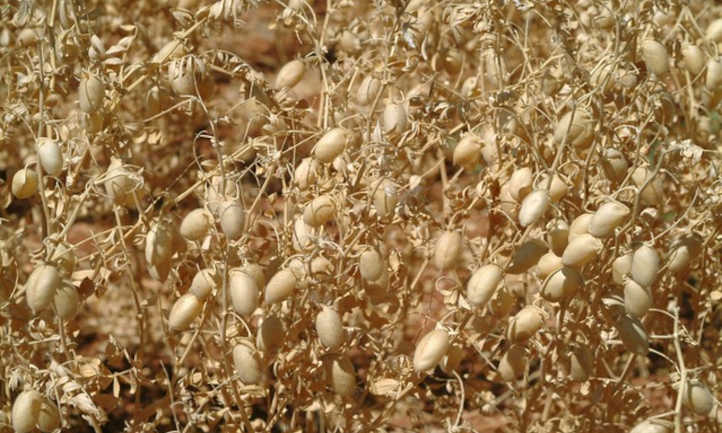
So now you’ve cared for your garbanzo beans and helped them thrive. Let’s discuss the steps for a successful chickpea harvest.
Harvesting
If you’d like to enjoy your chickpeas fresh, harvest them about 100 days after you plant them. Snap off the pods, and eat them like snap peas. If you’d like to harvest dried chickpeas, allow the entire plant to wither and turn brown, and then pull it up by the roots. Lay each plant on its side on a flat, warm surface and wait for the pods to crack open, revealing the dried chickpeas within. Bite one of the chickpeas carefully. If it barely dents, it’s ready. After the drying process, harvest chickpeas and separate the shelled chickpeas and the remains of the harvested plant.
Storing
Fresh and unshelled chickpeas last for 3 to 5 days in the refrigerator, in a plastic bag. Fresh peas don’t freeze well. Dried seeds keep in an airtight container for 2 to 3 years. If you’d like to try cooking chickpeas for storage, know they’ll keep in the refrigerator for 3 to 4 days. To freeze cooked chickpeas, lay them in a single layer on a cookie sheet, and freeze them for at least an hour. Transfer them to a freezer bag and store them for up to 3 months. You can also roast or dehydrate cooked chickpeas to make a crunchy snack that can be stored for a couple of weeks.
Troubleshooting
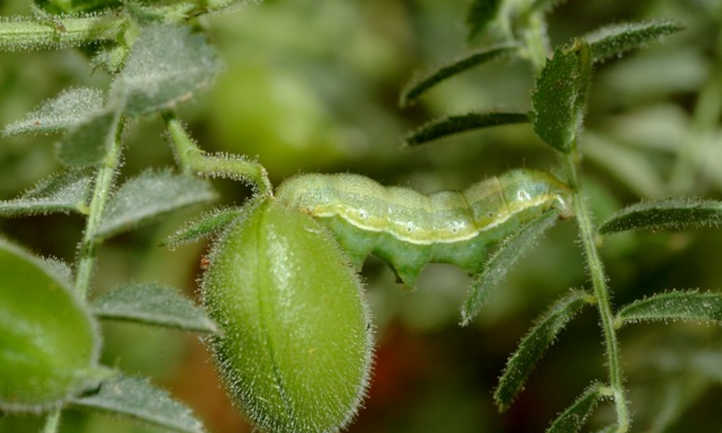
There are things to look out for when you are growing these lovely plants. Here’s a quick run-down.
Growing Problems
If you grow garbanzos in partial shade, expect a smaller yield than you’d get from a plant in full sun.
Overhead watering weakens the plant and creates conditions where diseased plants are more likely. Water at the roots only, if possible, but if not, water very early in the day so that the sun can dry the plants. If you’ve watered overhead and fungal diseases appear, remove damaged parts of the plant as needed, then water at the base.
If the soil temperature gets too hot or too cold, chickpea plant blossoms and seed pods can drop, reducing your yield. Mulch will regulate the soil temperature in snap freezes and heatwaves. In conjunction with frost and shade cloth (where applicable), you can keep your plant alive.
Planting chickpeas among other legumes will cause an overflow of nitrogen to all involved.
Pests
Beet armyworms are dark green caterpillars with banding and are the larvae of the small mottled willow moth. These feed on the leaves of chickpea plants and can skeletonize a plant in high infestations. Control them with spray applications of Bacillus thuringiensis (Bt). Space your treatments at least 7 to 10 days apart. Introduction of parasitic wasps works to control armyworms too.
Chickpea leafminer, known scientifically as Liriomyza cicerina, consumes the flesh between cell walls and the surface of leaves. They leave a small discolored trail in the leaves as they feed. Try seeding your crop early to prevent infections. This way, it’s too cold for leafminers and they won’t make their way to your plants. If this doesn’t work for your situation, diluted neem oil sprayed per the manufacturer’s recommendations can slowly penetrate leaves and will reduce leafminer activity. Remove any leaves with miner trails and destroy them, as you can sometimes catch an active leafminer that way.
Bean beetles (Epilachna varivestis) are super-cute yellow or red beetles with black spots. But they do a lot of damage quickly, consuming leaf matter until there is nothing left. Early seeding helps prevent them from having a chance to get to your crop. Handpick any off of your plants as needed and throw them in soapy water. Lacewings feed on them, and applications of either diluted neem or insecticidal soap sprays can help. For severe outbreaks, pyrethrin is effective.
Cutworms sever the stem of your chickpeas at the soil line, making it impossible for a yield to even develop. One way to prevent them is to not plant chickpea after another legume. A foil or plastic collar or even an old cardboard toilet paper tube placed to cover the bottom three inches of stem keeps them away too. Hand-pick and drown any larvae you see, although these will mostly be hidden in the soil. Bacillus thuringiensis can be effective against the larvae as well, but preventative measures are generally more effective.
Pod borers are the common name for two caterpillars in the Helicoverpa genus. They feed on the leaves at first, making their way to the seed pods of your garbanzo plant. You’ll see their frass on plants where they’ve fed. Hand pick them as you find them, and apply Bt to affected plants.
Note that all liquid forms of pesticides can potentially damage beneficial insects when still wet. It’s best to apply these sprays late in the day after most bees or other beneficial insects have retreated to their home for the evening. The sprays will then dry overnight, making them less likely to hurt your good bugs.
Diseases
Ascochyta blight, caused by Ascochyta rabiei, shows up as circular, light-brown lesions on plants. Over time, the lesions will develop black raised spots called pycnydia that can spread the fungal spores. If left unchecked, this can cause stem lesions that lead to broken stems, and may reduce yields as fungus spores proliferate. One of the best ways to control blight is to plant disease-resistant varieties of garbanzo. You can also apply a pre-emptive copper fungicide spray 4 to 6 weeks after transplanting, and another just as your bean pods form.
Fusarium wilt, caused by the fungus Fusarium oxysporum, causes wilting in all parts of the plant as leaves turn pale yellow and stem split open. Reduce the incidence of this disease by plowing under harvest debris, planting resistant varieties, and rotating crops every three years. It’s not recommended to try any fungicides with fusarium wilt, which can build resistance to these over time. Some mycorrhizal additives are showing that they reduce the incidence of Fusarium spread.
Bean mosaic virus appears as irregular yellowing on the leaves of legume plants. Foliage warps as leaves roll up or pucker, and plants experience stunted growth or even death. Sowing disease-free and disease-resistant seeds is key here, as is reducing pests that may be vectors of the disease. There is no treatment for the bean mosaic virus. Affected plants should be removed and disposed of in the trash, not your compost bin.
Frequently Asked Questions

Q: Are chickpeas easy to grow?
A: As long as you give them what they need, and keep ahead of disease and pests, they are easy to grow.
Q: Can you grow chickpeas from dried chickpeas?
A: Yes! This is actually where the chickpea plant comes from. See the planting section to learn how to sow chickpea seeds.
Q: Where do chickpeas grow best?
A: They love full sun, and rich, well-draining soil. This could be in the ground, a raised bed, or a container or planter.

